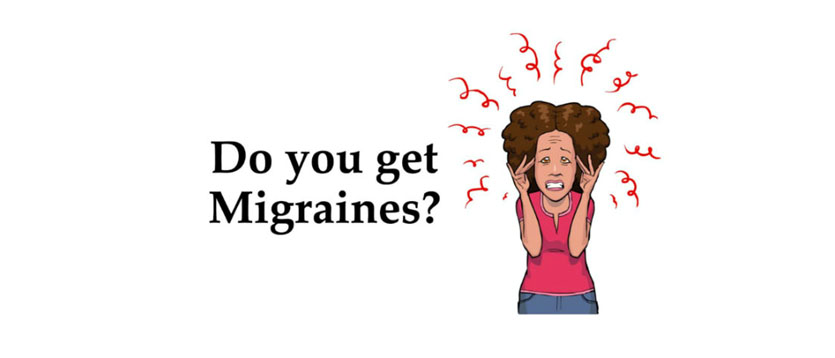Headache and Migraine Institute
TREATMENT OPTIONS FOR HEAD PAIN AND MIGRAINE PAIN
Our Pegasus Headache & Migraine Institute targets the cause of the pain to eliminate the pain. You can count on us to ensure you that your pain relief and ongoing management could not be in better hands than those of our head pain specialists across Dallas-Ft. Worth.

Best Treatments for Chronic Headaches & Migraines
Prolotherapy for Headaches and Migraines
Prolotherapy is a very minimally invasive treatment for chronic pain wildly regarded for it’s effectiveness. At Pegasus Pain Management, we often use this advanced technique to treat recurring headaches and migraines. This injection of sugar (dextrose) into pain points helps produce collagen via the introduction of natural irritants (dextrose) to stimulate the body’s immune system’s healing mechanism to naturally create collagen, thus kickstarting the body’s natural process for repairing damaged – or stressed – tissue. In this instance, relaxing the blood vessels, muscles, and nerves of the head and neck so the pain is alleviated.
Botox Injections for Headache and Migraine Pain Relief
Botox, also known as botulinum toxin, is a neurotoxin used for chronic headache or migraine pain management. Patient receive a quick series of injections at specific sites on the head and neck to decrease the severity and frequency of future migraine attacks. Migraine pain relief duration varies, and it is common for the doctor to recommend additional treatments, usually once every 12 weeks.
Botox interrupts pain signal transmissions from the nerve cells to the muscles by paralyzing the nerve endings causing a breakdown in communication to the brain. The paralysis is not permanent, but while it lasts the patient will not feel the pain of a migraine. As the Botox wears off and the nerve cells regain feeling, the pain may return. When this occurs, the patient may once again receive the treatment.
How does Botox prevent Muscle Spasms?
Botox is created from bacteria – the same bacteria that can block nerve activity in the muscles. Therefore, it can be used to treat muscle spasms by a simple injection to the area that is causing muscle spasms. By releasing Botox into the body, it will act as an antagonist – blocking the release of chemicals that are in charge of muscle contraction.

When does the treatment take effect?
For the majority of people, treatment can take a week – however, be prepared for it to take longer. Each person is different and depends on the healing speed of your body.
Will Botox completely cure Muscle Spasms?
Although Botox has been proven to reduce symptoms and provide relief, it can actually just weaken the severity of the spasms rather than healing them. The injections must be renewed every 16-20 weeks however it is advised to speak to a professional every 12 weeks as a general check-up.
Will Botox help muscle spasms instantly?
No, it may take a couple of injections for your body to get used to them. If a certain muscle is in spasm, it may take a couple of attempts to pinpoint the exact muscle that is causing the distress.
However, once pinpointing the muscle, Botox will cause the muscle to relax and the involuntary muscle contractions to stop.
How does Botox prevent Migraines?
Botox also is known for treating migraines as well as muscle spasms. This is because of its ability to block nerves can limit the communications in the brain that causes a severe migraine. There is a significant correlation between Botox and the cure for migraines, however, doesn’t appear to work for any other headache type.
How do I know if I should be using Botox for Migraines?
Researchers have recommended that you should only be using Botox if you are having headaches consistently (for example, 12 or more days every month – with most headaches feeling like a migraine.)
How often does the treatment have to be taken?
To reduce symptoms of a chronic migraine, injections need to be taken every 10-12 weeks. It often takes around 6 months for symptoms to completely disappear and from that point, you can assess any side effects and how your body is reacting to the injections.

Migraine Head Pain Relief
A migraine can be an inherited gene, but what increases the tendency or frequency of migraine attacks depend greatly on one’s lifestyle and migraine’s triggering events.
It is undeniable that migraine headaches can sometimes be relieved by certain medications. However, the long-term goal for migraine sufferers focuses on the prevention of the attacks rather than treatment.
Managing stress, avoiding triggering factors, and getting enough rest are just some of the advice that physicians can give.
According to Dr. Carolyn Bernstein, a neurologist and assistant professor at Harvard Medical School, treatments are available for acute migraine attacks, and the most important thing to do if migraines are making an impact on how a person lives, is to see someone who can treat them.
If you are experiencing pain from chronic headaches or migraines, contact Pegasus pain management, in the Dallas-Fort Worth area, immediately to see what kind of pain treatment is best for you. To contact Pegasus pain management call (214) 702-5855
Headache and Migraine Pain Articles
References:
- Migraine Statistics: Facts and Data about Migraine. (n.d.). Retrieved from https://migraine.com/migraine-statistics/ (accessed August 31, 2016).
- Maletic, V., Jain, R. K., & Raison, C. L. (2012). 100 questions & answers about chronic pain. Sudbury, MA: Jones & Bartlett Learning.
- Kane, M. (2016). Shining a light on migraine relief. Harvard Health Publications: Harvard Medical School. https://www.health.harvard.edu/blog/shining-light-migraine-relief-2016083010148
- Bernstein, C., & McArdle, E. (2008). The migraine brain: Your breakthrough guide to fewer headaches, better health. New York: Free Press.





